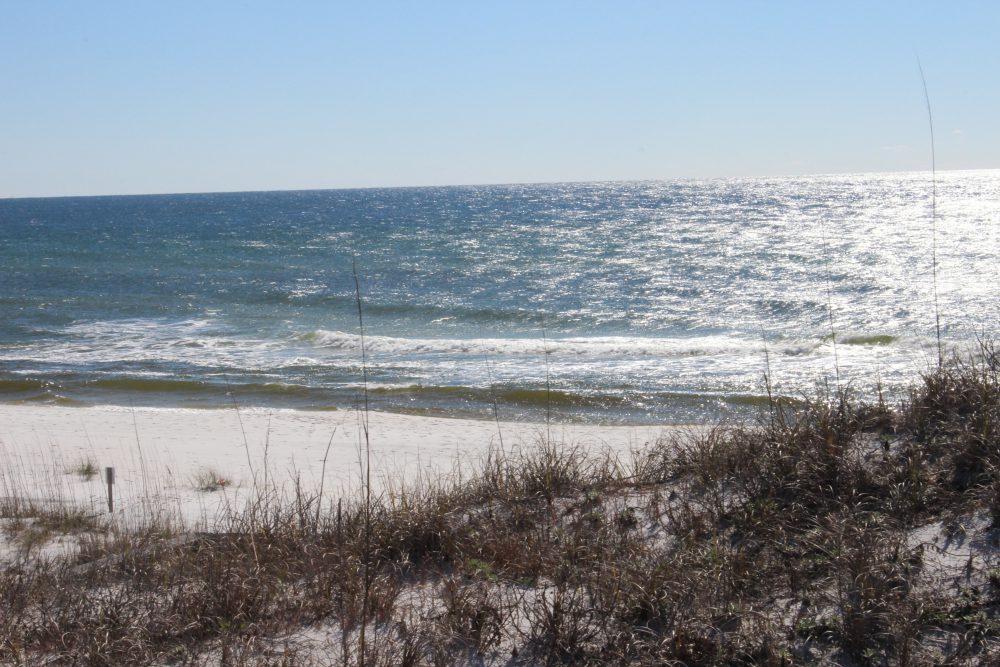
by Rick O'Connor | Feb 21, 2025
They say life began in the oceans. We know that the lithosphere is cracked, adding new land, subducting land over time. But much of the lithosphere is covered with water – and here life began. Initially it had to begin on either rock or sand. The sand would have been produced by the weathering and erosion of rock. Obviously, this would all have had to occur over a long period of time. But the first forms of life would have to be able to find food and nutrition from a barren seafloor with little to offer. This would take a special community of creatures – ones we call the pioneer community.
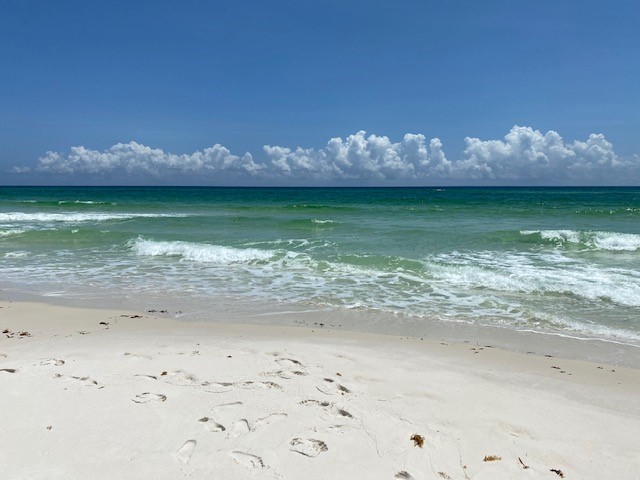
It is believed that life began in the ocean.
Phot: Rick O’Connor
Key members of these communities would have been the producers’ ones who produce food. What we know now is that producers absorb carbon dioxide and water and – using the sun as a source of energy – convert this into carbohydrates and oxygen. We have since learned that there are ancient forms of bacteria that can do this with hydrogen sulfide and other compounds. However, it started – it began. One problem with this model is that much of the world’s oceans are too deep for sunlight to reach. Thus, living organisms would need to be close to shore. Today we know two things. One, the ocean’s surface is covered with microscopic plant-like creatures (phytoplankton) who can float and reach the sunlight. Two, some of the ancient chemosynthetic bacteria (those that do not need the sun and can use other compounds to produce carbohydrates) live on the ocean floor.
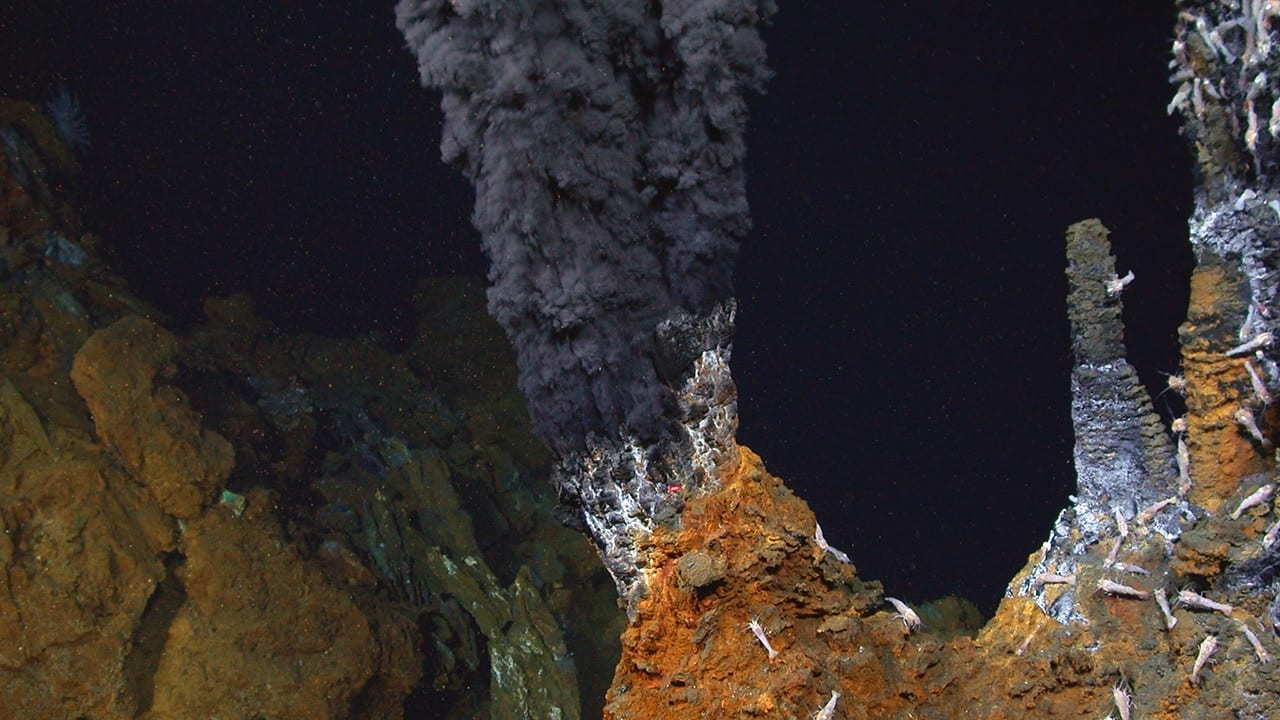
The black smokers – hydrothermal vents – found on the ocean floor.
Photo: Woodshole Oceanographic Institute.
Producers are followed by consumers, creatures who cannot make their own food and must feed on either the producers or on other consumers. There are plankton feeding animals – oysters, sponges, corals, and zooplankton. There are larger creatures that feed on larger plankton – manta rays, menhaden, and whales. There are consumers who feed on the first order of consumers – stingrays, parrotfish, and pinfish. And there are the top predators – orcas, sharks, and tuna. The ocean is a giant food web of creatures feeding on creatures. All creatures evolve defenses to avoid predation. Predators evolve answers to these defenses. Some species survive for long periods of time like the horseshoe crabs and nautilus. Others cannot compete and go extinct.
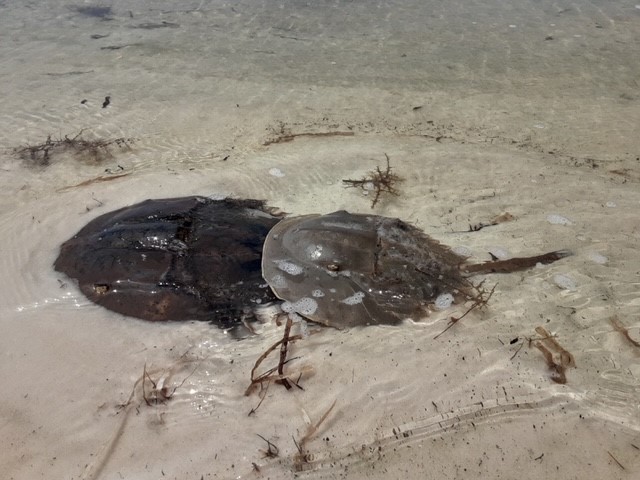
Horseshoe crabs are one of the ancient creatures from our seas. Photo: Bob Pitts
As we mentioned in Part 1 of this series – the hydrosphere is in motion. Different temperatures, pressure, and the rotation of the planet move water all over. These currents bring food and nutrients, remove waste, and help disperse species across the seas. Life spreads to other locations. Some conditions are good – and life thrives. Others not so much – and only specialists can make it. The biodiversity of our oceans is an amazing. Coral reefs, mangrove forests, and seagrass beds are home to thousands of species all interacting with each other in some way. The polar regions are harsh – but many species have evolved to live here, and the diversity is surprising higher than most think. The bottom of the sea is basically unknown. It has been said we know more about the surface of the moon than we do at the bottom of our ocean. But we know there is a whole world going on down there. We believe the basic principles of life function there as they do at the surface – but maybe not!
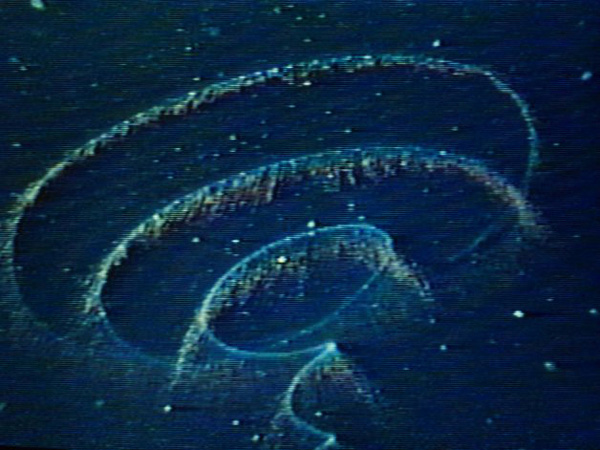
The magical lights of the deep sea.
Photo: NOAA
Fossil records suggest life here began almost one billion years ago. The fossils they find are of creatures similar and different from those inhabiting our ocean currently. As we stated that the physical planet is under constant change – life is as well. It is a system that has been working well for a very long time. Over the last few centuries humans have studied the physical and living oceans to better understand how these systems function. They have been functioning well for a very long time. And though life began at sea – there was dry land to exploit – for those who could make the trip. That will be next.
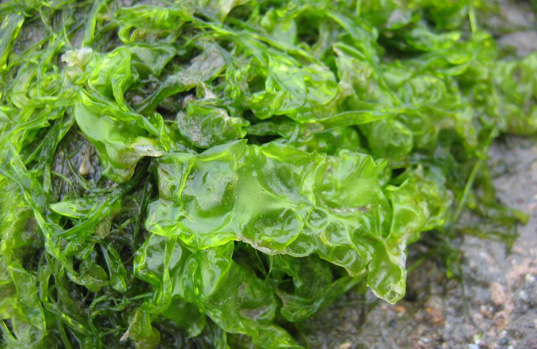
by Rick O'Connor | Feb 14, 2025
With this article we will shift from the microscopic creatures of the Gulf of Mexico to the macroscopic ones – ones you can see without a microscope. We will begin with the simplest and most primitive of macroscopic creatures – the seaweeds.
Many locals see the grass washed ashore along the Intracoastal Waterway and call this seaweed, but it is in fact seagrass. Seaweed differs from seagrass in that they are not true plants. True plants are vascular – meaning they have a series of “veins” running through their body called xylem and phloem. These veins move water and material throughout the body – similar to the arteries and veins of an animal. But seaweeds lack this “circulatory” system, rather they absorb water through their tissues and must live in the water environment to do this. Seaweeds lack leaves, stems, and roots. They do not produce seeds or flowers, but they do require sunlight and nutrients and conduct photosynthesis as true plants do. When I was in college seaweed was considered simple plants – just nonvascular ones. Today biologists believe they are too simple to be considered plants and thus are a group existing between the microscopic phytoplankton and the true vascular plants we know from our lawns and forests. They are often called algae as well as seaweed.

Mats of Sargassum on a south Florida Beach.
Photo: University of Florida
Biologists divided the seaweeds into divisions based on their color, which is determined by the photosynthetic pigments they have for photosynthesis. Compared to my college days, the classification of green algae is quite complex. The entire group was once placed in the Division Chlorophyta. Today, most sources consider only the marine forms of green algae in the group Chlorophyta, with numerous other groups consisting of thousands of species. Most green algae live in freshwater and are believed to be the group that led to the land plants we are familiar with. Their photosynthetic pigments include chlorophyll and a and b but also carotene and xanthophyll. The pigments are dominated by the chlorophylls – hence their green color – and the ratio of chlorophyll to carotene and xanthophyll is the same as the plants you find in your yard – hence the argument they led to the evolution of land plants.
Green algae – or any of the seaweeds – are not as common along the northern Gulf of Mexico as you find on other coasts. Not having true roots, stems, or leaves, seaweeds must attach themselves to the seafloor using a suction cup type structure called a holdfast. To attach, the holdfast must have a rock of some type. Along the rocky shores of Maine and California, they are quite common. Even with the limestone rock of south Florida you can find these. But the fine quartz sand of the northern Gulf of Mexico is not as inviting to them. That said, we do find them here and most are found on man-made structures such as jetties, seawalls, and artificial reefs – I found one attached to a beer can.
Of all of the green algae that exist in Florida, I have only encountered three. One is called “sea lettuce” in the genus Ulva. Attached to rock jetties and seawalls, it looks just like lettuce and is beautiful, brilliant green in color. It grows to about seven inches in height and is used as a food source in different countries. It can become a problem if local waters are high in nutrients due to pollution from land sources. It will grow abundantly, reducing habitat for other species, and wash ashore during storms where it breaks down releasing gases that can be toxic to shore life and humans. I first encountered it growing on the rock jetties at St. Andrews State Park in Panama City, but it does grow on local hard structures.

Sea Lettuce.
Photo: University of California
“Dead Man’s Fingers” – Codium – is another green algae I first encountered it on the jetties of St. Andrews. The thick finger-like projections of this seaweed extending from the rocks did resemble a glove – or the fingers of a dead man within the rocks. Some species around the world are used for food. But I could not find any references that it is here.
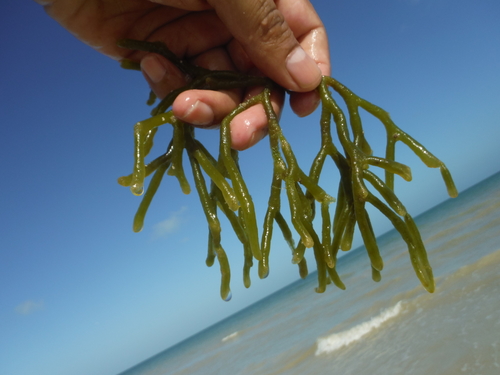
“Deadman’s Fingers”.
Photo: iNaturalist
The third species of green algae I have seen locally is known as the “Mermaids Wine Glass” – Acetabularia. This beautiful seaweed is relatively small and does resemble a wine, or martini glass. They are quite abundant in south Florida and is the one I found growing on a beer can submerged in Santa Rosa Sound.
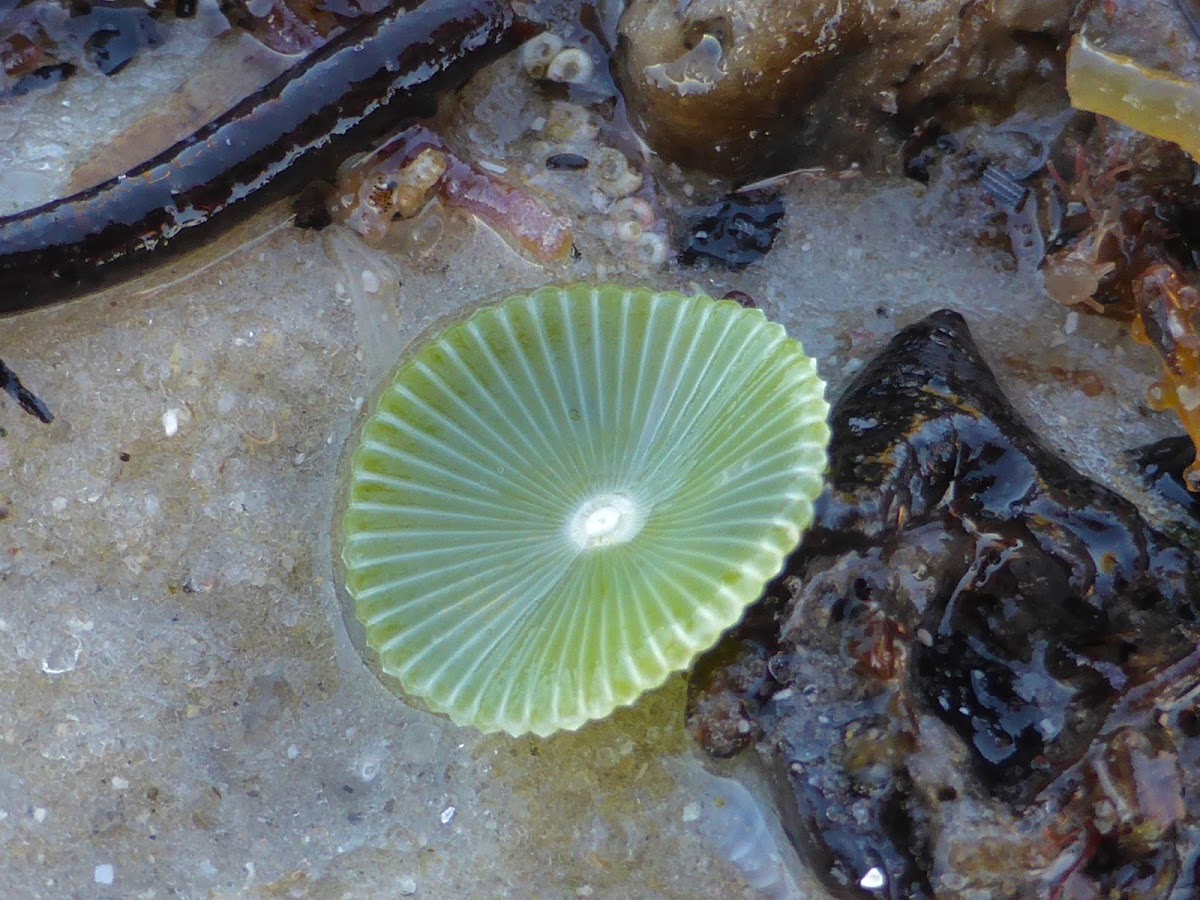
“Mermaid’s Wineglass”
Photo: Project Noah
Though seaweeds in general are harder to find along the northern Gulf coast, they are fun to search for and do play a role as primary producers here.
References
Green Algae. Wikipedia. https://en.wikipedia.org/wiki/Green_algae.
Deadman’s Fingers. Monterey Bay Aquarium. https://www.montereybayaquarium.org/animals/animals-a-to-z/dead-mans-fingers.
Introduction to Green Algae. University of California/Berkley. https://ucmp.berkeley.edu/greenalgae/greenalgae.html.
Ulva Lactuca. Wikipedia. https://en.wikipedia.org/wiki/Ulva_lactuca.
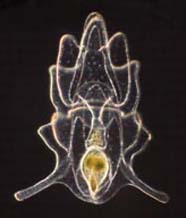
by Rick O'Connor | Jan 24, 2025
What are meroplankton? How do they differ from regular plankton?
In the plankton world there are those that are plankton (drifters) their whole lives – holoplankton – and those who are plankton for only part of their lives – meroplankton. Most know the meroplankton as larva – the early stages of large creatures like fish, crabs, and shrimp. When you pull a plankton net through the waters of the Gulf of Mexico you will collect a lot of meroplankton – and yes… they are food for the plankton feeders just as the other forms of plankton are. Like most of the holoplankton, most are microscopic and swim through the water using cilia or flagella. Like copepods, they are multicellular and are considered true animals. Here are a few that you could find in a plankton sample…
Planula larva
These are the larva of jellyfish, sea anemones, and corals. They are ciliated cells that move through the water column until they metamorphose into the adult forms. Most will settle out on hard substrate on the seafloor and develop into a flower-like structure called a polyp. Some grow into adult polyps – like sea anemones and corals – while others will go through a second stage and become swimming medusa – the jellyfish.
Trochophore larva
This is another ciliated larval form that is the first stage of some mollusk, annelid worms, and nemertean worms.
Veliger larva
This is a ciliated larval form of several mollusk. Those that go through the veliger stage begin as trochophores. Some go through the trochophore stage while in the egg, others hatch and go through the trochophore before metamorphosizing into the veliger. The veliger stage will develop the characteristic mollusk shell, and many will develop a foot which can be used in locomotion on the seafloor searching for suitable habitat.
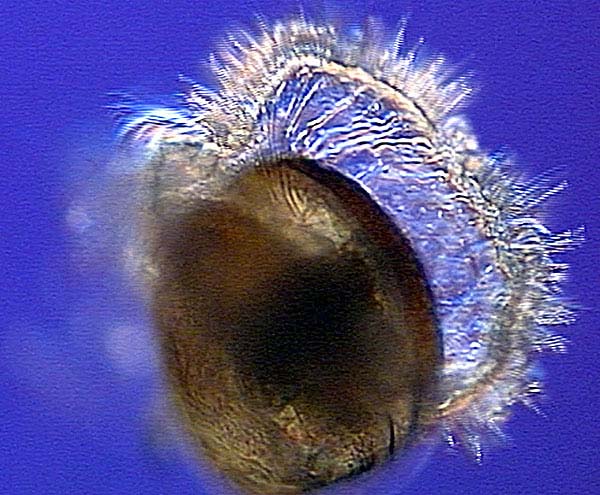
The veliger stage of many mollusks.
Photo: NOAA.
Nauplius larva
This is the first stage of a crustacean. It is very hard to tell which crustacean the nauplius will become but they do resemble crustaceans with segmented body parts and an exoskeleton. Most crustaceans will molt into the zoea stage, and some then into a megalops stage, before becoming the adult.
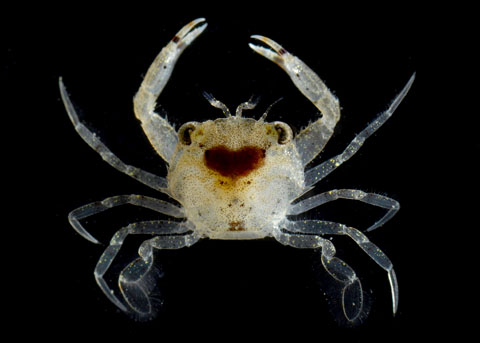
This is the megalops stage of a crab.
Photo: University of California Irvine.
Bipinnaria larva
Another ciliated larval form that will eventually become an echinoderm – starfish, sea urchin, sand dollar.

Bipannaria are the larval stage of starfish and sand dollars.
Photo: NOAA.
Ichthyoplankton
Most of the fishes in the northern Gulf of Mexico begin life as meroplankton as well – these are called “ichthyoplankton” and are quite abundant in a plankton sample. Even large fish, such billfish and swordfish, begin life at this stage.
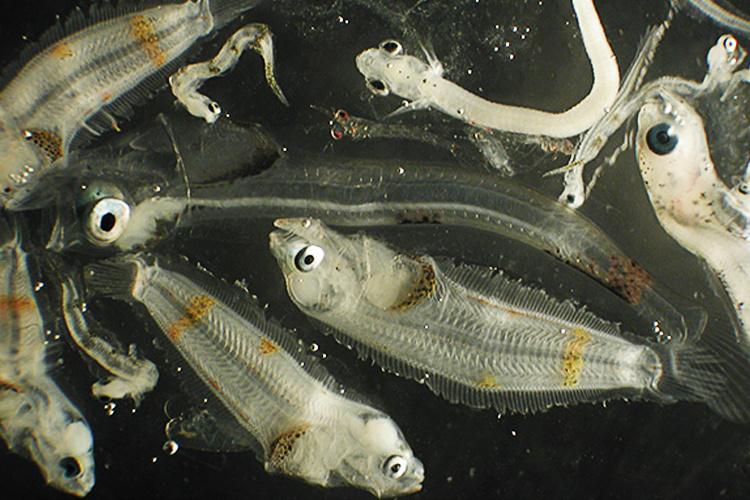
Most fish in the northern Gulf begin their lives as tiny plankton.
Photo: NOAA.
The first nine post in this series have been about microscopic creatures found in the northern Gulf. It goes without saying that there are literally thousands of other forms of plankton we did not mention. It is also important to mention how important these creatures are to the health of the Gulf and why they were as much of a concern during the oil spill as were dolphins, sea turtles, and sea birds. As the plankton go… so goes the Gulf. We will now turn our attention to the larger creatures – ones you do not need a microscope to see.
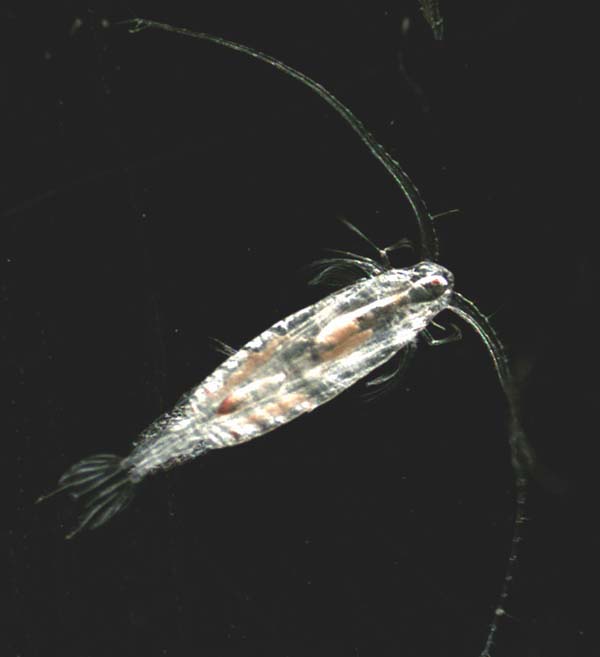
by Rick O'Connor | Jan 17, 2025
So far in this series we have been discussing microscopic creatures in the northern Gulf of Mexico that are single celled – though many may be linked together in chains. In this article we will begin discussing microscopic creatures that are multicellular.
When you do a plankton tow in the northern Gulf, and have a look under the microscope, you will notice most of the moving/swimming plankton are these bug-looking creatures scientists call copepods. The Latin origin of their name (oar-foot) comes from the motion of their swimming legs, which resembles rowing with an oar. They twist and turn all within the field of view, moving quite fast. You will not miss them.

One of the most common creatures in the northern Gulf. The copepod.
Photo: National Oceanic and Atmospheric Administration.
It has been stated that the copepods produce some of the largest biomass in the oceans, there are TONS of them within the water column. They swim all through the water column feeding on the phytoplankton we have already discussed in this series. They play a very important role in the food chain connecting the photosynthetic phytoplankton – the “grasses of the sea” – with the consuming animals of the northern Gulf. It has been stated that the copepods are most likely in every creature’s food chain – making them one of the most important members of the northern Gulf of Mexico community. In addition to connecting the marine animals to the primary producers, they also are important at removing carbon from the surface waters of the oceans, reducing the negative impacts of excessive carbon in the atmosphere.
As mentioned, they are multicellular but still microscopic. We also mentioned they look like bugs and are in the Phylum Arthropoda along with the true bugs. Arthropods have jointed legs, antennae, and an exoskeleton that must be shed during growth – and this is the case with the copepods. They are in the Subphylum Crustacea – indicating they are related to shrimps and crabs. Most are between 1-2mm in length but can reach lengths of 10mm and large to be seen in a glass of sea water as flecks darting about. Most have a single compound eye and, along with their antennae, can detect the movements of both predators and prey.
Many larger creatures of the northern Gulf feed on them directly – such as the plankton feeding fish and whales. But most include them as a lower part of their food chain. Copepods can sense the presence of such predators and are quite fast swimmers. They have been clocked at 295 feet in one hour – which is equivalent to a human swimming at 50mph!
Though you will never see them when you visit the beaches, they are one of the most abundant, and ecologically important, creatures in the northern Gulf of Mexico.
References
Copepods. National Museum of Natural History. https://naturalhistory.si.edu/research/invertebrate-zoology/research/copepods.
Copepod. Monterey Bay Aquarium. https://www.montereybayaquarium.org/animals/animals-a-to-z/copepod.
Walter, T.C.; Boxshall, G. (2024). World of Copepods Database. Accessed at https://www.marinespecies.org/copepoda on 2024-11-17. doi:10.14284/356.
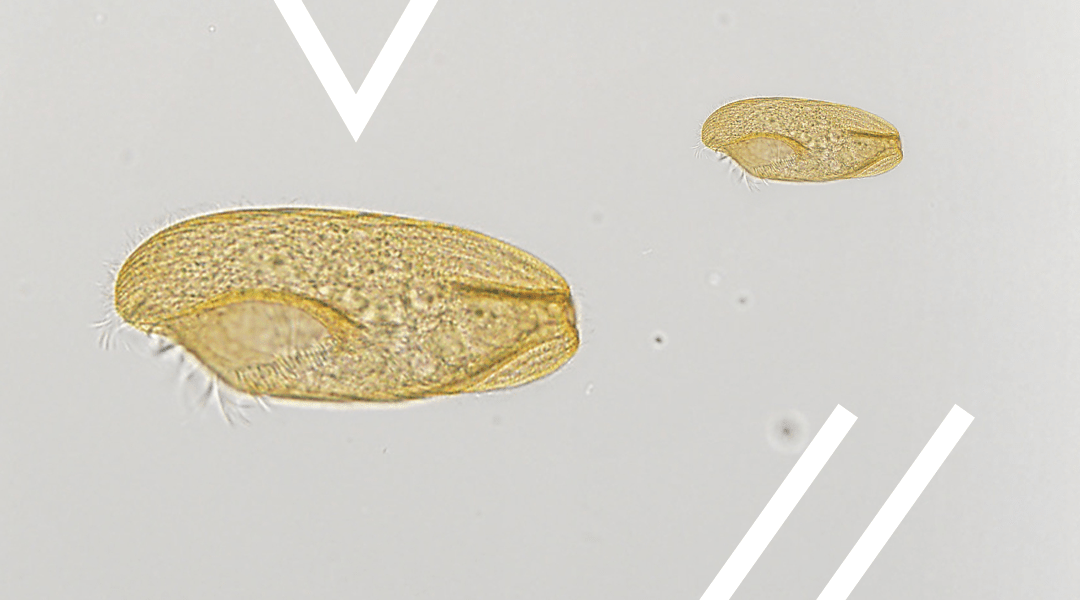
by Rick O'Connor | Jan 10, 2025
After two articles on protozoans, we now know what these animal-like creatures are. We have discussed some that move by flagella, and others than move by pseudopodia. The last group by short flagella called cilia.
Ciliates are often covered with these small hair-like structures and can move them relatively fast. Thus, they swim MUCH faster than flagellates, and both are faster than the amoeboid sarcodinids.
They are easy, and not easy, to identify under a microscope. You will be examining the slide seeing diatoms and dinoflagellates scattered across the screen, an occasional flagellate slowly swim by, the very slow fried egg-looking amoeboid slime through, and then a dot/cell will zip by at high speed. That was a ciliate. Easy to identify because anything moving that fast is a ciliate. Hard to identify because you have NO idea which one. Under the heat of the light, they will eventually slow down, and you can better see them for identification.

Ciliated cell found in soil.
Photo: Florida Atlantic University
Most ciliates have an open mouth and what is called an oral groove. This groove acts like a throat leading the food to the food vacuole – where it is digested. Waste will live the protozoan either through the cell membrane, or back out the mouth. At the opening if the mouth are numerous cilia that generate a current sucking up food like a vacuum cleaner and moving it down the oral groove. Most have many nuclei which are easily seen under the scope. They move through the water column collecting food and moving it down the food chain. Most lack shells, so do not contribute to the sediments of the ocean floor or on our beaches.
Up to this point in the series we have been discussing the microscopic phytoplankton and zooplankton found in the Gulf of Mexico. These are creatures few know about, nor do they understand their importance in cycling food, energy, nutrients, and other chemical processes that keep the ecology of the northern Gulf of Mexico in balance. But is now time to turn our attention to the larger – macroscopic – creatures of this world. We begin with seaweed.
References
Yaeger, R.G. 1996. Protozoa: Structure, Classification, Growth, and Development. Chapter 77. Medical Microbiology, 4th edition. https://www.ncbi.nlm.nih.gov/books/NBK8325/#A4082.
















